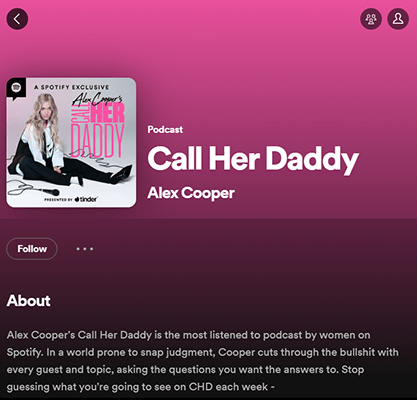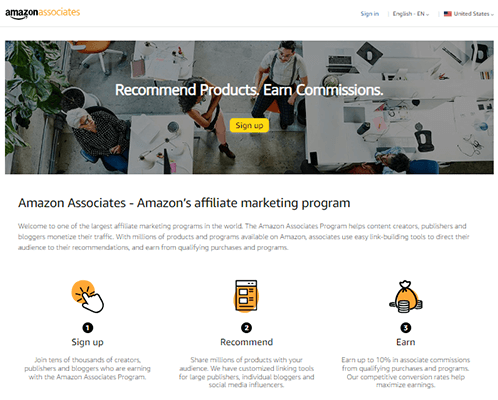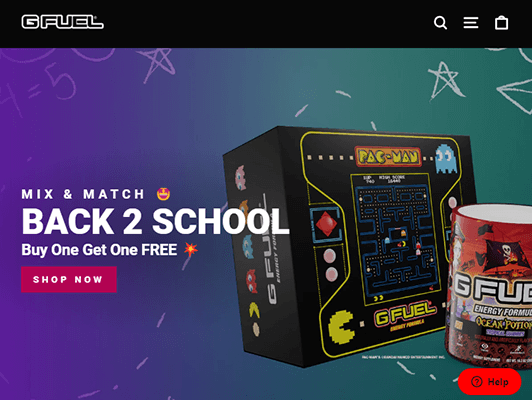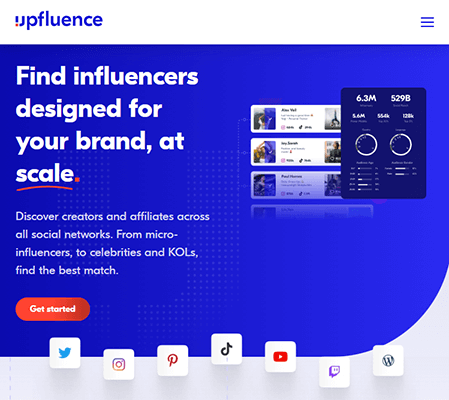What Is A Social Media Influencer? Definitions & Types Of Influencers

What is an influencer?
That’s the question we’re going to focus on in this article.
From defining the term “influencer” to covering what professional influencers do, how they get paid and why brands should get on board with influencer marketing, we’re going to go over everything you need to know about the social media influencers of today.
What is an influencer?
An influencer is someone with the power or authority to sway or affect people’s opinions and actions.
To put it simply, albeit vaguely, an influencer is someone who influences others to take certain actions, become aware of specific information or form certain opinions.
Examples of influencers include politicians, celebrities, industry experts, athletes and even teachers.
However, these days, when most people use the term “influencer,” they’re most likely referring to social media influencers.
What is a social media influencer?
A social media influencer is a content creator with notoriety, if even a little.
By gaining a following, whether that’s as little as a few dozen subscribers or as much as several million, the content creator is able to persuade consumers into buying specific products and even staying away from others based on opinions they give about said products and the trust they’ve built with their audiences.
A social media influencer is a content creator who does this on platforms like YouTube, TikTok and Instagram.

Most creators get started by publishing non-branded content. As they grow their following well enough to get the attention of brands, they start to include sponsor spots in their videos and even create dedicated videos and posts about sponsored products.
The industry term for this practice is “influencer marketing.”
What is influencer marketing?
Influencer marketing is a new type of marketing that emerged alongside the rise of influencers. Really, when YouTube, Twitter, Facebook and Instagram started to take off in the late 2000s and early 2010s.

Influencers are known to seek out sponsorships and brand deals when they reach certain follower milestones, such as 1,000, 10,000 and 100,000 followers.
However, brands are also known to seek out influencers themselves in what are called influencer marketing campaigns.
What is an influencer marketing campaign?
It’s a social media marketing strategy in which brands pay influencers to promote new products, sales and events.
We’ll talk about this more later, but because influencers are able to rake in millions upon millions of video views and social media likes, influencer marketing is an extremely effective form of advertising these days.
Types of influencers
There are two primary ways to categorize influencers: by the type of content they create and how many followers they have.
There are four primary types of influencers when it comes to the type of content influencers create.
They are influencers who create video content, influencers who host a regular podcast, influencers who publish primarily to social media and influencers who publish blog posts.

All four types of influencers have the potential to gain a following and influence the purchasing decisions of millions of consumers.
Let’s briefly touch base on each of these influencer types and the content they produce.
Video content
Influencers who create video content primarily do so on platforms like YouTube, TikTok and Twitch, though Facebook and Instagram are also popular sources of video content these days.
Video content comes in all shapes and sizes these days.
One influencer might publish 10-second comedic clips to TikTok several times a day while another may publish high-quality, 20-minute reviews to YouTube a few times a week.

One may work alone, coming up with ideas and filming and editing videos all on their own while another may have an entire production team helping them behind the scenes.
Nevertheless, both influencers have active, highly-engaged audiences who have a higher potential of purchasing products they recommend.
Podcasts
Podcasts are the new radio shows. They’re sometimes published in video format, but for the most part, you can catch audio-only podcast episodes on platforms like Apple Podcasts and Spotify.

Podcasts are anywhere from a few minutes to several hours long and cover a wide variety of topics.
Popular podcast formats include interview-style podcasts and podcasts centered around industry news.
Podcasts give influencers more opportunities to grow a following.
Social media posts
Some influencers do not publish regular content to YouTube, TikTok or a podcasting platform.
Instead, they only publish text and video-based posts to social media platforms like Instagram, Facebook and Twitter.
In spite of these platforms being known as ways for brands and individuals alike to post updates about their businesses and lives, they’re still perfectly valid paths influencers can walk down and gain recognition.
Plus, it’s just as easy for influencers to promote sponsors in social media posts as it is in YouTube videos or podcast episodes.
Blog posts
While bloggers may not go as viral as YouTube or TikTok creators do, influential bloggers still possess the ability to affect their audiences’ opinions on products.
And in case you didn’t know, a blog is a website where an influencer can publish articles, known as blog posts, on a variety of different topics.
Similar to social media followings and engagements, if a blogger’s website gains enough traction, they’ll have a lot of potential in earning sponsors.
Organizing types of influencers by audience size
The marketing industry has defined a set of standards for organizing influencers, and that’s by the number of followers they have.
Here are the standard categories many use today:
Nano Influencers – Less than 10,000 followers
Micro Influencers – 10,000-100,000 followers
Macro Influencers – 100,000-1,000,000 followers
Mega Influencers – More than 1 million followers
Some also use a term called “mid-tier influencers” to describe influencers who have between 100,000 and 500,000 followers.
This is a good distinction to make due to the very large gap between an influencer with 100,000 followers and an influencer with 1 million followers.
How do influencers make money?
Sponsorship deals are huge money makers for influencers. They allow influencers to earn large lump sums of revenue in exchange for introducing new products to their audiences.

All types of influencers can earn sponsorship deals as follower count isn’t the only metric sponsors are interested in.
They also want to know how many views an influencer’s videos receive, how many likes their posts get and the engagement rates they typically experience.
Even a nano influencer with a following of 1,000 subscribers or less can earn sponsorship deals. All it takes is the right hook to get them to bite.
When influencers accept sponsorship deals, they work with the brand to come up with marketing strategies. This typically involves promoting the brand’s product in a sponsor spot in a video or podcast episode or creating dedicated videos/blog posts for that product.
Influencers may also promote sponsors in social media posts, especially Instagram Stories.
Twitch streamers may even include sponsors as lower third overlays on livestreams.
How else do influencers make money?
Okay, sponsorship deals are great, but what disadvantages do they have? And do influencers make money using other methods?
Brand deals are great, but they definitely have their disadvantages.
For one, they require influencers to maintain a certain level of trust with their audience. If an audience doesn’t trust an influencer and it’s obvious (through bad press and trending for negative reasons on social media), brands that target that audience aren’t going to trust the influencer’s ability to bring in sales.

Influencers also need to be careful about which brands they decide to partner with. If they choose a brand the influencer’s audience doesn’t like or trust, they aren’t going to bring in sales for that brand.
Even worse, they may even destroy any trust they did have with their audience.
Brand deals are also risky. Not only may they fall through, but influencers may find themselves in the dark if their only source of revenue were brand deals and they suddenly find themselves in a position of not being able to find any.
So, what other revenue strategies do influencers use?
Affiliate marketing
Affiliate marketing is similar to sponsorship deals, except brands only pay affiliates after they bring in sales.
This is done through a commission rate, which allows the influencer to earn a percentage of every sale they generate for a brand. This is usually anywhere from 3-50% of every sale, though many commission rates fall in the 10-30% range.
Most influencers become affiliates by completing simple application forms brands place on their websites.

Some brands auto accept all affiliates who apply while others have a manual albeit short approval process that involves verifying the validity of the affiliate’s website.
Some influencers are large enough to negotiate a special commission rate.
In short, affiliate marketing is a fantastic way for smaller influencers to generate a reliable source of revenue even when they don’t have enough influence to land sponsorship deals.
Advertisements
Influencers who upload videos to YouTube and stream live content to Twitch earn ad revenue from video ads that play during their content.
It’s one of the biggest drivers of revenue for YouTubers.

In order to earn ad revenue, YouTubers need at least 1,000 subscribers and a minimum of 4,000 watch hours.
To earn ad revenue on Twitch, streamers must stream for at least 500 minutes over a 30-day period, stream on 7 different days over a 30-day period, receive an average of 3 concurrent viewers over a 30-day period, and have at least 30 followers.
Influencers are then given a cut of the ad revenue their content generates, which is always subject to change.
Merchandise
Merchandise is another popular source of revenue for influencers, especially YouTubers and Twitch streamers.
Usually, merchandise, or “merch,” means branded clothing and accessories.
Influencers either create dropshipping stores that print merch on demand as orders come in or work with a company one-on-one to create higher quality merch.
Nevertheless, it’s a simple way for influencers to generate revenue and spread brand awareness.
Subscriptions
YouTube and Twitch have dedicated subscription functionalities influencers can use to charge subscribers small subscription fees in exchange for exclusive content and other perks.
However, influencers of all kinds and of all sizes also use services like Patreon, OnlyFans and Ko-fi to charge subscription services outside of YouTube and Twitch.
Some influencers even create membership sites.
Products
Once influencers gain enough notoriety, many go on to create their own products.
This usually starts with a book of some sort, such as an autobiography, but many influencers also team up with brands in partnerships that see those brands releasing products with influencer branding.
A good example of this is energy drink brand G Fuel, whose marketing strategy relies on partnerships with YouTubers, Twitch streamers and even major entertainment franchises.

Influencers who generate a lot of revenue and save up enough wealth often go on to create their own niche-specific products.
Why should brands work with Influencers?
What is an influencer to a brand?
An influencer is a brand’s ticket to accessing their target audience without having to build up that audience themselves.
Let’s put it this way. In order for a brand to be successful and continue being successful, they need to expose their product to consumers who are most likely to buy it, i.e., their target market.
Because influencers in their niche already have active followings that include that target market, working with them gives brands an easier chance to get their product seen by their target market.
Let’s discuss this further.
The benefits of working with social media influencers
Working with influencers provides many benefits to brands that all center around the point we already made: working with influencers gives brands opportunities to tap into target markets they don’t have influence in themselves.
This gives brands quicker ways to build influence in those markets.
Instead of having to spend time and money building up their reputation on social media from scratch, all they need to do is find influencers whose audiences match the kind of consumers they’re looking for and enter partnerships with them.
Through influencer marketing, brands can generate sales for new and existing products quickly.
Over time, that trust a brand’s target market has in the influencer they partner with will carry over to the brand itself.
To recap, here are the main benefits brands can experience when working with influencers:
- An additional marketing strategy to use.
- More sales.
- Access to audiences of all sizes that primarily include members of the brand’s target market.
- A chance to gain a social media presence the brand didn’t originally have.
- The opportunity to establish trust within your target market.
- More visits to your website, especially your primary landing pages.
- More backlinks from authoritative sites.
How do brands find social media influencers?
There are a number of different tools brands can use to find social media influencers to partner with, and we’ll get to those in a second, but many brands can find influencers to partner with by doing a bit of manual research.
Here are the steps brands can take to find influencers to partner with:
- Identify the social media platforms the brand’s target market spends time on.
- Create a casual social media account for each platform.
- Use each platform’s search function to find content and creators in the brand’s niche.
- Like and follow these creators, and spend some time on casual accounts getting to know the platform.
If you’re looking to partner with influencers, know that you don’t necessarily need to use casual accounts for this strategy. You can always use your branded accounts.
However, with casual accounts, you don’t need to worry about your image if you’re new to social media and don’t really know how things work.
Spending time on the platform will give you the opportunity to learn about the influencers your target market likes and trusts the most in your niche.
These are the influencers you should get in touch with about sponsorship deals.
Just know that the more social media followers an influencer has, the more they’ll likely charge for brand deals.
Let’s talk about a popular influencer marketing tool you can use to find influencers.
Upfluence
Upfluence is an influencer marketing tool that helps brands find influencers to partner with on platforms like Instagram, Twitter, Pinterest, Twitch, TikTok and YouTube.

The tool’s user interface (UI) has a search function that allows brands to find influencers using the following filters:
- Keyword
- Social media channels
- Language
- Gender
- Country
- Whether or not the influencer has an email address
- And more
Brands can even integrate their ecommerce platform to use Upfluence’s influencer matching features to find relevant influencers based on customer data stored by the ecommerce platform.
The tool also has outreach and payment functionalities, allowing brands to utilize an influencer campaign tool to contact influencers and even send negotiated payments.
FAQs about influencers
What does an influencer do?
An influencer creates content that targets a particular niche. Most influencers create video content, but some create audio content (podcasts) or written content (blog posts) as well.
Some influencers create all types of content while others publish primarily to social media platforms like Instagram, Facebook and Twitter.
Topics for influencer content include comedy, entertainment, reviews, guides, video diaries (vlogging) and more.
Do influencers get paid?
Influencers get paid to promote branded products through influencer marketing campaigns.
Influencers can choose which brands to enter partnerships with as well as negotiate with brands on what they feel they should be paid for campaigns.
Influencers are not paid by social media platforms directly, other than ad revenue they may earn by uploading content to YouTube and Twitch.
Other than those two methods, influencers can earn money by using affiliate links to promote products from brands they aren’t sponsored by, creating their own merch, accepting user subscriptions and creating their own products.
What is an example of an influencer?
MKBHD, or Marques Brownlee, is a good example of an influencer.
Marques is a YouTuber in the tech niche who has over 17 million subscribers on YouTube, 4 million followers on Instagram and 6 million followers on Twitter.
Marques has been publishing tech content to YouTube since 2009, and despite not being an industry professional, he still has quite a bit of influence in the tech niche due to the 3.6 billion views his videos have received over the years.
His most popular videos have over 15 million views each, and most new videos receive millions of views in just a few days.
Video topics primarily revolve around reviews of smartphones and similar gadgets as well as industry-related current events, and at a few million views per video, he has enough influence to affect consumers’ opinions on new tech products.
How many followers do you need to be an influencer?
There’s no hard set rule on how many followers it takes to be considered an “influencer.”
Like we said, an influencer is someone with the ability to affect the opinions and buying behaviors of consumers.
So, even if you only have 20 subscribers but have successfully encouraged at least one of them to purchase a product you recommend, you’re still considered an influencer by definition.
You’re just considered to be a nano influencer but on your way to becoming a micro influencer.
Related Reading:

